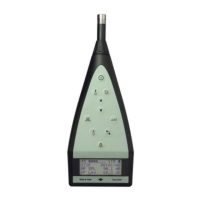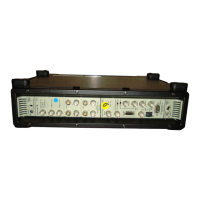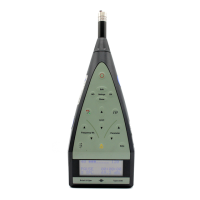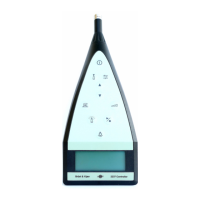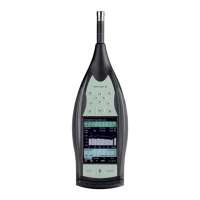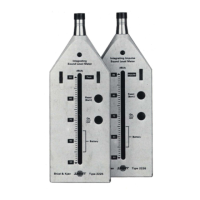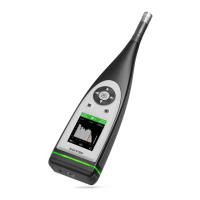
Do you have a question about the BRUEL & KJAER 2239 B and is the answer not in the manual?
| Type | Sound Level Meter |
|---|---|
| Measurement Range | 30 dB to 140 dB |
| Dynamic Range | 110 dB |
| Detector | RMS |
| Display | LCD |
| Operating Temperature Range | -10°C to +50°C |
| Microphone | 1/2" Prepolarized Free-field Microphone |
| Weighting Networks | A, C, Linear |
| Time Weighting | Fast, Slow, Impulse |
| Standards | IEC 61672-1 |
Explains how buttons and text are represented in the manual.
Lists the key capabilities of the Type 2239B vibration meter.
Lists the parameters monitored during vibration measurement.
Describes available settings like measurement range and frequency weighting.
Details the different types of memory (Set-up, Buffer, Records).
Explains the function and operation of the display backlight.
Instructions on how to convert the instrument between sound and vibration modes.
Information on battery replacement, level indicators, and the back-up battery.
Explains the function of each button on the instrument's front panel.
Details the information displayed on the instrument's main screen during operation.
Instructions for selecting the display language for the instrument.
Explains the process and importance of calibrating the vibration meter.
Instructions on how to attach the accelerometer to the object being measured.
Guides on how to perform manual and preset-timed vibration measurements.
Explains how the instrument indicates and handles measurement overloads.
How to view and interpret the measured parameters on the instrument.
Details how to configure instrument settings before taking measurements.
Information on saving, recalling, and managing measurement records.
Instructions for connecting and printing measurement results using a portable printer.
How to download measurement data from the instrument to a computer.
Describes how to use the AC output for recording vibration signals, e.g., to a DAT recorder.
Information on instrument service, repair, and contacting the dealer.
Guidelines for handling, cleaning, and storing the instrument to maintain its condition.
Advice on diagnosing and resolving common issues with the instrument.
Lists common error messages, their causes, and recommended solutions.
Detailed technical specifications of the Type 2239B vibration meter.
Information regarding the CE marking and compliance with relevant directives.
Lists part numbers and descriptions for the instrument and its accessories.
Provides a quick reference to the instrument's main display elements.
Explains the various parameters that can be displayed on the instrument.
Lists and describes the available frequency weighting options.
Visual guide showing how parameters are displayed and changed.
Flowchart illustrating how to access and change instrument settings.
Flowchart showing how to select the appropriate measurement range.
Flowchart detailing the instrument's data storage, print, and download functions.
